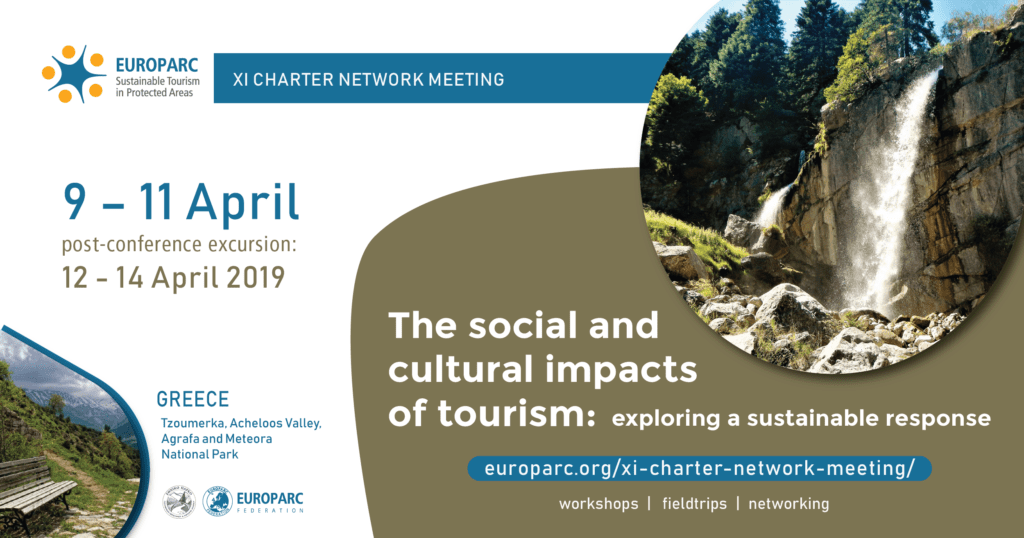The 11th edition of the ECST Network Meeting brought together 140 people from 20 countries. They exchanged the best tourism management practices, heard different experiences from their colleagues during 4 different Workshops and Open mic session, tasted delicacies from all over Europe during the Marketplace, and enjoyed the mountains of Tzoumerka, Acheloos Valley, Agrafa and Meteora National Park – the host of the Meeting.
You can watch a short video highlighting the best moments of the Meeting here:
Inspiration from our guests: Building bridges
The analogy with the famous stone bridges, an important cultural feature of the people of Tzoumerka, guided our plenary session. Protected Areas need to build bridges, if we are to safeguard our natural values and create opportunities for resilient communities to sprout.
- Natura 2000: opportunities for sustainable tourism embracing natural and cultural heritage in nature protected areas, by Sofia Pachini, EU Commission
Sofia Pacchini, from the DG Environment, reminded us about the Natura 2000 network and the incredibly valuable resource it is. Reinforced the importance of building a bridge between policy, that is being created at the EU, national or local level, and practice that we do every day in our protected areas.
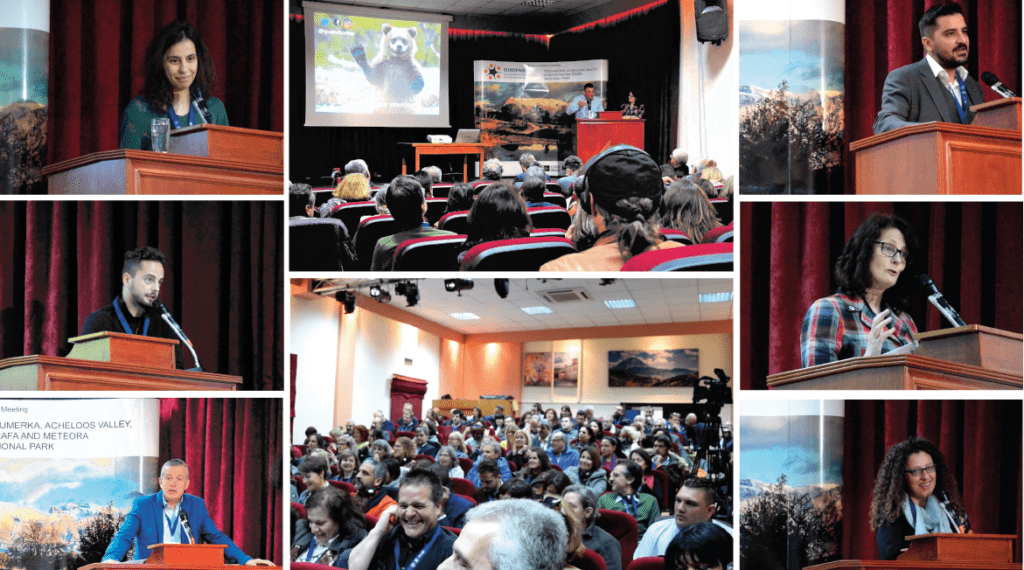
More than protection: a stimulus for the region
- Managing cultural and social impacts: the 5 Terre Experience, by Emanuele Raso, 5 Terre National Park
From 5 Terre National Park in Italy, Emanuele Raso illustrated the response of a park to an area that has experienced some challenges in tourism flows and threats to its cultural heritage with the abandonment of traditional economic activities. He showed us the importance of building bridges to connect people to their landscape. Working side by side with the community and local producers, and creating conditions for new entrepreneurs, the Park is making both locals and visitors responsible for the landscape, as a joint effort to keep the authenticity of the land for years to come.
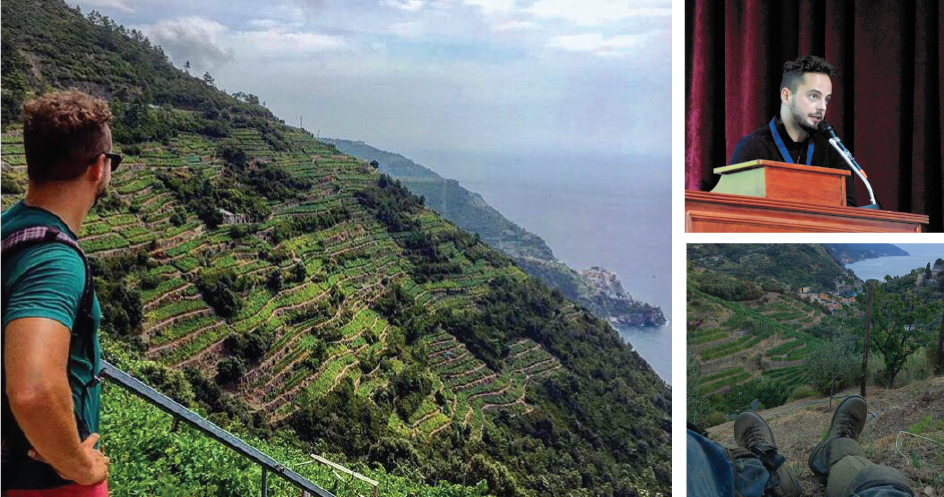
The 5 Terre National Park sees itself as being the protector of that landscape, but more so, as the stimuli for others to take action.
And that’s a very interesting shift on how we see the work of our Protected Areas.
From a (young) entrepreneur’s perspective
- Ecotourism as a driving force for rural areas – by Victor García, Quei Victorino
Victor started by the age of 19 an ecotourism project with his uncle, Quei Victorino, in the core of the Fuentes del Narcea, Degana e Ibias Nature Park, the biggest in Asturias. The large brown bear community that inhabits the region is one of the main interests of his visitors, and Victor knows how to best guide them through the park and find the right spots for a bear watching experience.
Although guiding tours takes a significant part of his work, Victor also learned from his uncle the local art of handcrafting wooden objects and is revitalizing the almost lost traditional technics. In his village, only 14 inhabitants remain – he is the youngest.
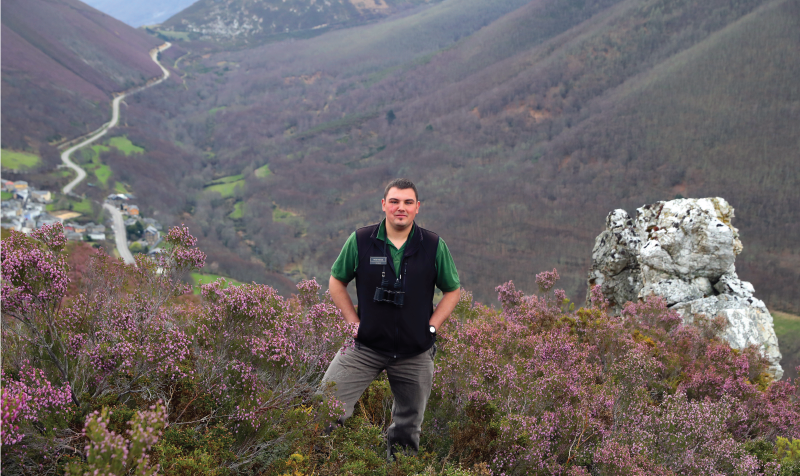
Victor Garcia Rodriguez from Quei Victorino
Victor gave us the bridge between generations, revealing how is passion and inspiration for his landscape came from the people who came before him. And how much he wants to keep these traditions alive, while developing new ecotourism experiences. Above all, Victor gave a call to the protected area community,
a call to adapt our management to create opportunities for entrepreneurs to come in and make it happen.
To close up the session, Professor Dimitris Goussios from the University of Thessaly gave us the bridge between the community, its values, and its identity, and the use of the natural resources that are around us. Tourism brings change into that community, into the economy of the area, but naturally, it brings change to the very natural landscape we came to appreciate, and value, and enjoy.
An important top-down message
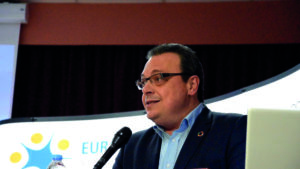
Sokratis Famellos, Alternate Minister for Environment and Energy of Greece at the XI ECST Network Meeting in Greece, April 2019
The Alternate Minister for Environment and Energy of Greece, Sokratis Famellos, was one of the special guests we welcomed. During his speech, Mr Famellos focused on the development perspective of the environment, specifically stating that environment is life and economy. The Alternate Minister noted former mangement decisions that have had an impact on Greek’s environment, and highlighted the main actions that have been implemented. Mr Famellos asserted that now “Management Bodies have to contribute to the local economy and catalyse local production growth”, and closed his speech with future commitments aimed at improving the work of Protected Areas.
Check the photo album
Workshops: outcomes and presentations
One of the most expected moments of the ECST Network Meetings is the practical workshop sessions. In total, 4 international workshops were held and 1 extra, especially addressing the Greek context. Below, you can have a brief overview of each workshop and download the conclusions and presentations.

Participants developing their Stories during Workshop 1
Workshop 1 – Communications: Storytelling for Sustainable Destinations and Partners
Everybody has a story. The question is whether you know how to tell it. This was exactly the goal of the workshop – to find out what makes a good story, what makes one remember it, and relate to it. The workshop, led by Bárbara Pais from EUROPARC and co-organised by Peter Paul van Kempen from IUCN CEC and Frogleaps, was a deep incursion to the art of storytelling and how it can be used to communicate EUROPARC Destinations and the tourism partners’ commitment to sustainability. Through several practical exercises, participants have learned the structure and building blocks of a good story, and were challenged to build up stories for their destinations.
When discussing what makes a really good story, there was undoubtedly one thing standing out – passion. Passion about what you are doing, and what you are talking about. People need to see that you care, in order for them to care. Another good thing to remember is that you are stronger when not alone. Your project, as well as the story, will be more interesting if they contain more characters, more partners, and more connections.
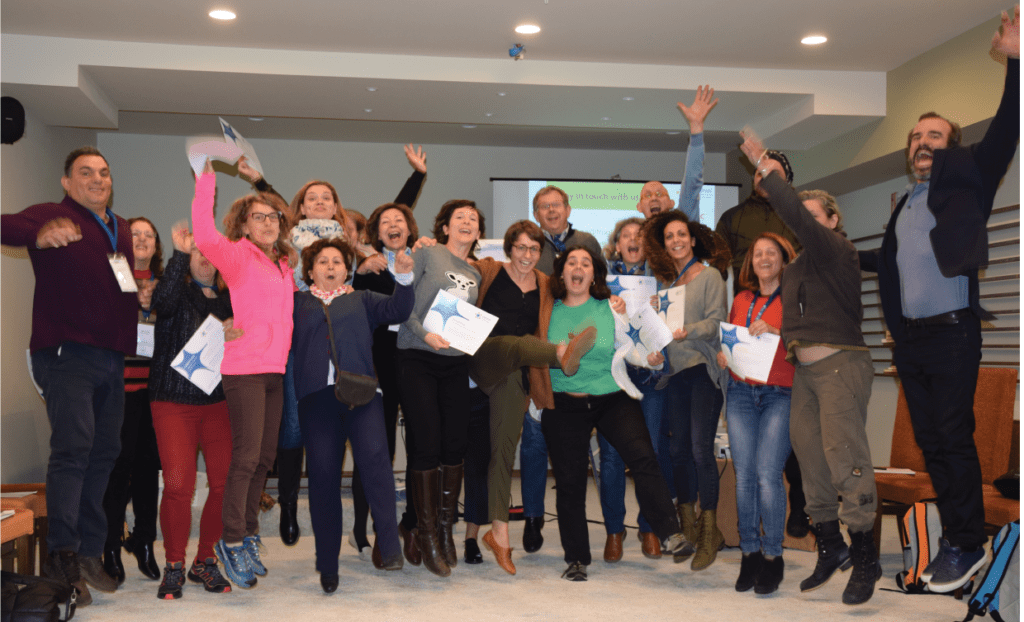
Participants of Workshop 1 “Storytelling” receiving their Certificate. Workshop 1 was more of a training session by Barbara Pais from EUROPARC Federation, and Peter Paul van Kempen from Frogleaps.org and IUCN CEC.
With Beth Cobo, from the Incoming tourism agency Trescália, we understood how challenges make part of the path and how sometimes even the most brilliant plans don’t guaranty success straight away. Beth showed us that persistence, patience and establishing local working networks play a fundamental role in opening the doors of success. So set up your story, don’t forget to tell your audience where you came from, and what efforts were needed in order to achieve your goals. The world loves winners but appreciates fighters even more.
- Conclusions of the Workshop
- Storytelling – by Peter Paul van Kempen from Frogleaps – access a free storytelling training by Frogleaps here
- The story of Trescalia: by Beth Cobo, Trescalia, Catalunya, Spain
This training-workshop was one of the actions foreseen in the Marketing Strategy and Communications Action Plan of the European Charter for Sustainable Tourism in Protected Areas. The aim is to provide more training opportunities and produce an online toolkit based on the outcomes of the workshop, to boost the recognition of EUROPARC Sustainable Destinations and their Partners.
Workshop 2 – Sustainable Tourism – Training for Tomorrow: Capacity building & Training
The Workshop “Sustainable Tourism Training for Tomorrow: Capacity building & Training”, moderated by Giacomo Benelli, looked into the need for training for Protected Areas staff and local tourism enterprises. The key topic of the contents was the provision of training on sustainable tourism for the staff of EUROPARC Sustainable Destinations, local businesses and other stakeholders. The workshop was highly interactive with discussions on where the gaps are, what are the needs, which tools are more effective and how to optimize the resources available.
Workshop participants tested for the first time a survey developed within the ERASMUS+ project “Sustainable Tourism: Training for Tomorrow”, that aims to increase the quality, supply and accessibility of training in sustainable tourism for Protected Area stakeholders across Europe. On the second day, a training course developed within the Interreg Project DestiMED was presented by Mauro Randone (WWF Mediterranean) who also tested the methodology within the workshop with the creation of two subgroups.
Other examples showed and discussed entailed the training activities in Guadeloupe National Park and the activities of the Balaton-felvidéki National Park Directorate, in particular linked with the project PaNaNet+.
- Conclusions of Workshop
- The European Charter for Sustainable Tourism in Protected Areas
- DestiMED training course – by Mauro Randone, WWF Mediterranean – MEET
- The ECSTPA strategy and training programmes in the Ebro Delta Natural Park – by Inmaculada Juan Franch, Catalunya, Spain
- Guadalupe National Park sustainable tourism vision, by Ferdy Louisy, Guadalupe, France
- PaNaNet+ project – by Erika Józsa, Balaton-felvidéki National Park Directorate, Hungary
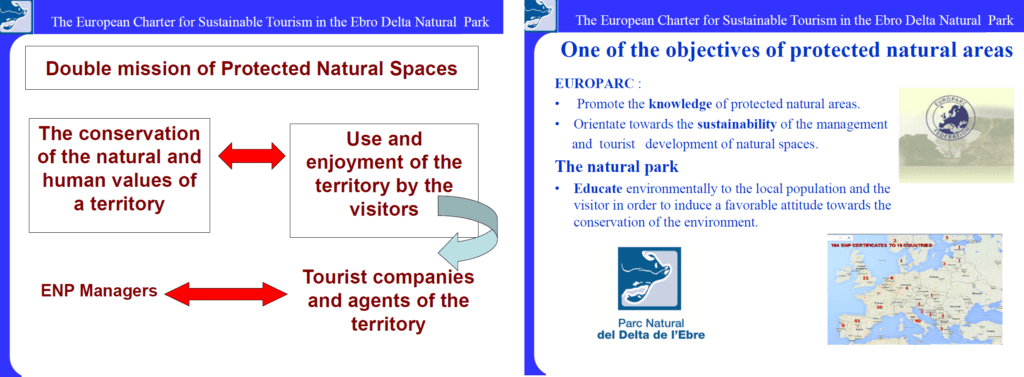
Extracted from the presentation of Inmaculada Juan Franch from Delta de l’Ebre Nature Park
Workshop 3 – Businesses and Tour Operators- Creating sustainable packages that work
The time is NOW to create effective links that WORK connecting our Charter Partners, in one side Tourism Businesses (TB) and in the other side Tour Operators (TO).
Both are eager to find the partners to start a profitable and sustainable business, an ECST Product/Package that allows tourists to visit a Sustainable Destination knowing that all partners involved are committed to the sustainability of the territory, involving their local community and providing an unforgettable quality experience.
Tourism businesses, tour operators and park technicians were able during the workshop to find out a step by step proposal in order to achieve:
a) an effective matchmaking between existing ECST Partners, both Tourism Businesses and Tour Operators;
b) increasing TO as ECST Partners III from the main emission markets that are interested in becoming ECST partners working with the existing awarded Tourism Businesses in Europe;
c) promote our ECST products next to the main Portal of sustainable tourism
d) a Commission of Sustainable Tourism within EUROPARC that can reflect the interests of Parks as well as TB and TO;
- Conclusions of the Workshop
- Ecotourism Association in Spain, Amanda Guzmán
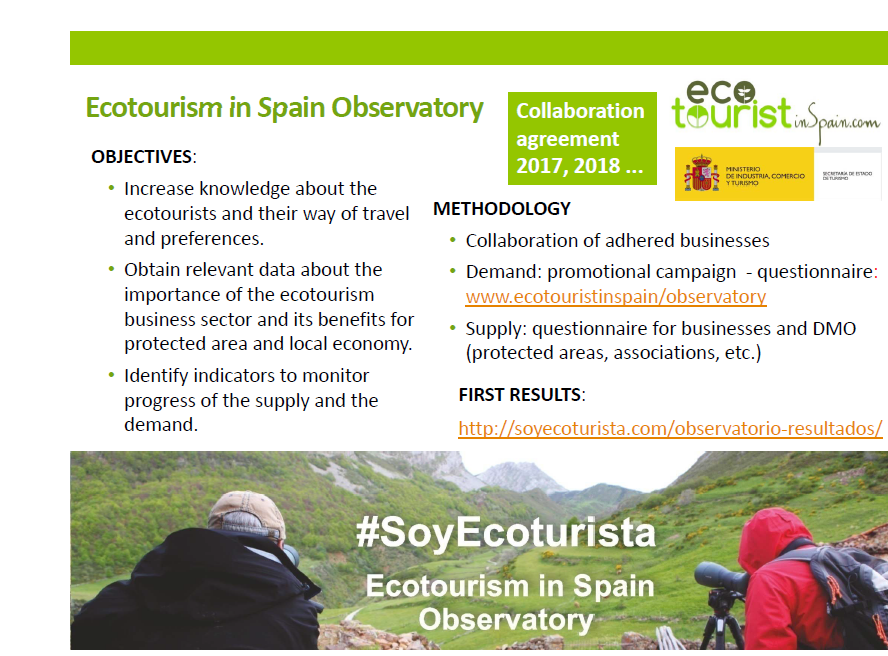
The Ecotourist Observatory is one of the actions of the Ecotourism organisation in Spain, providing relevant data about visitor preferences and supply/demand market
Workshop 4 – Planning visitors sustainably
In workshop 4, led by Stefania Petrosillo from EUROPARC Federation, participants had the chance to look at the challenges in effectively implementing visitor management strategies, and draw possible solutions based on the inputs shared by the case study presenters.
Stefania, policy officer at EUROPARC, gave an overview of the European tourism policy in the different European Institutions, highlighting some of the policies and funding lines available in the current framework. Participants got acquainted with a model for carrying capacity assessment that is being implemented in Spanish Parks, by Javier Gomez-Limón from EUROPARC Spain, and heard from Alison Hunter, the experience in visitor monitoring and the Partnership Plan of the Cairngorms National Park.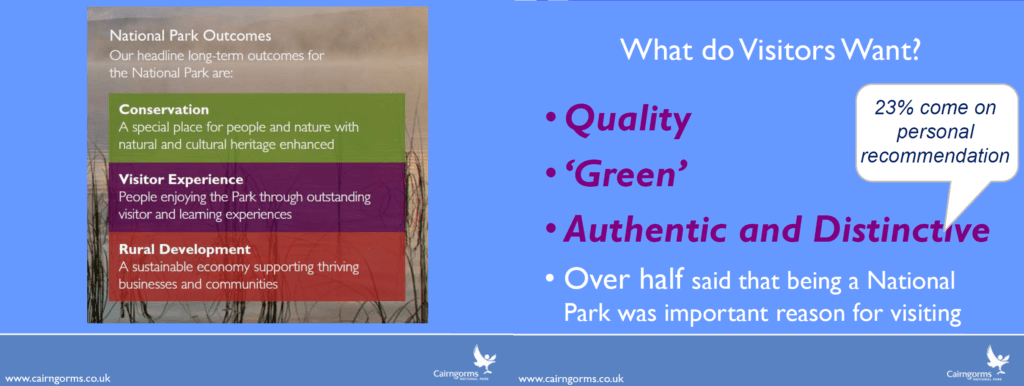
Main Challenges identified
- Lack/few data, information, skills, awareness, adequate infrastructures to influence visitor flows
- Overtourism, demand of outdoor activities in sensitive areas, seasonality
- Pressure to inhabitants, noisy, quality of life
- Funds
Solutions identified
- Technology
- Visitors involvement
- Stakeholders involvement
- Monitoring and survey
Download the presentations
- Conclusions of the Workshop 4
- EU tourism policy and the EUROPARC’s lobby and advocacy with EU Institutions: an overview – by Stefania Petrosillo, EUROPARC Federation
- Assessment of carrying capacity model in Spanish Protected Areas – by Javier Gomez Limón, EUROPARC Spain
- The Experience of the Cairngorms National Park and the Partnership Strategy: by Alison Hunter, Cairngorms National Park, Scotland, UK
The outcomes of visitor monitoring in the Cairngorms National Park, Scotland
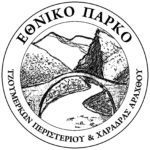 EUROPARC Federation thanks to the Tzoumerka, Acheloos Valley, Agrafa and Meteora National Park, for having hosted the meeting and the participants.
EUROPARC Federation thanks to the Tzoumerka, Acheloos Valley, Agrafa and Meteora National Park, for having hosted the meeting and the participants.
To be a responsible tourist is necessary to be a responsible person
Watch our vision for sustainable tourism, and learn more about our work here.
